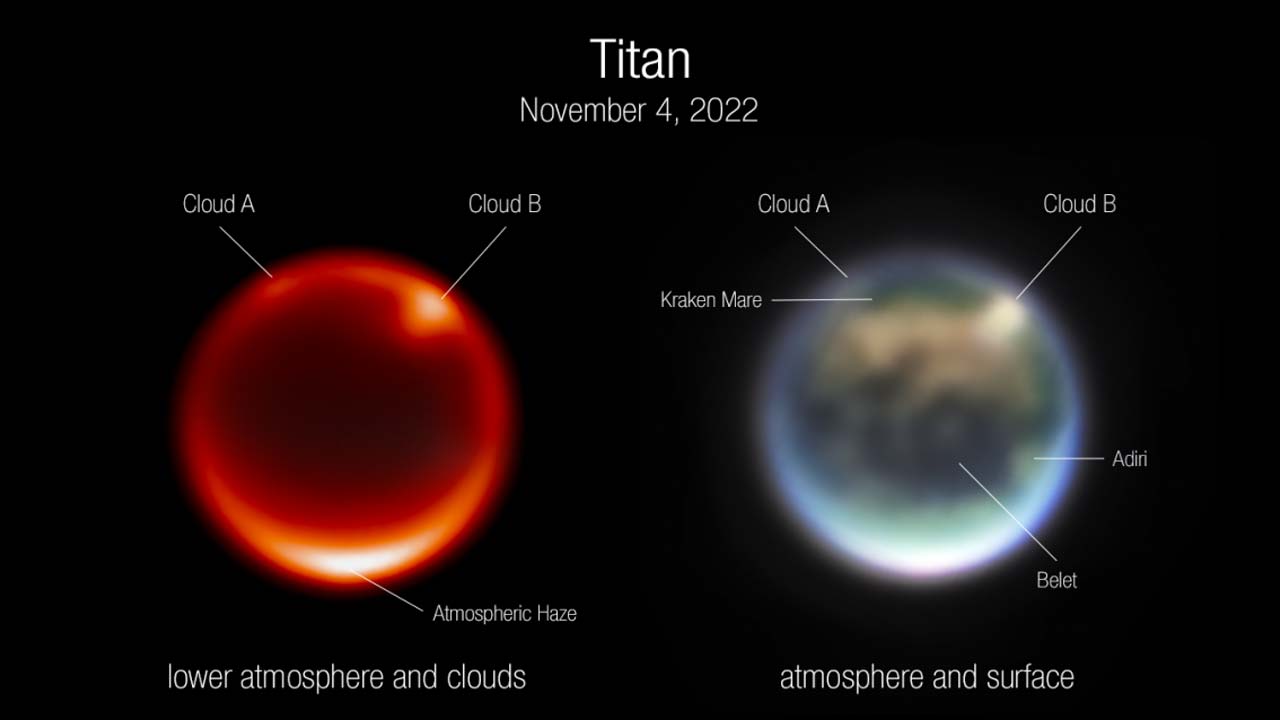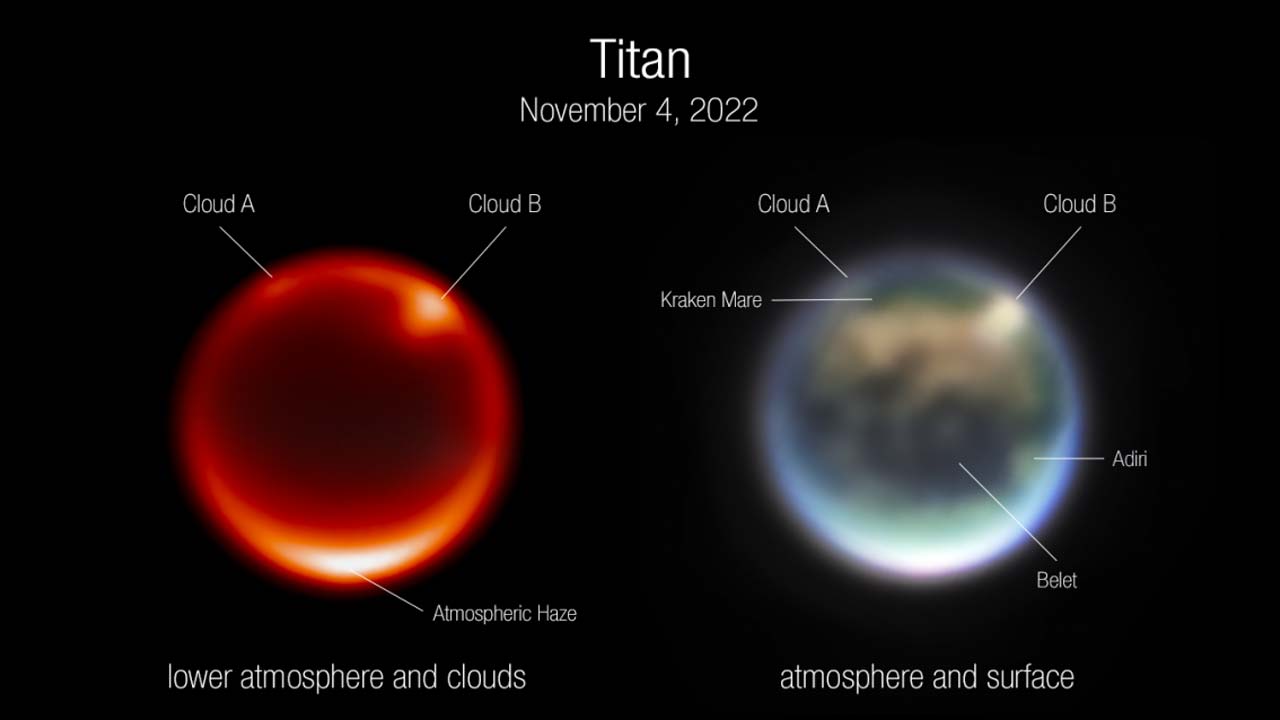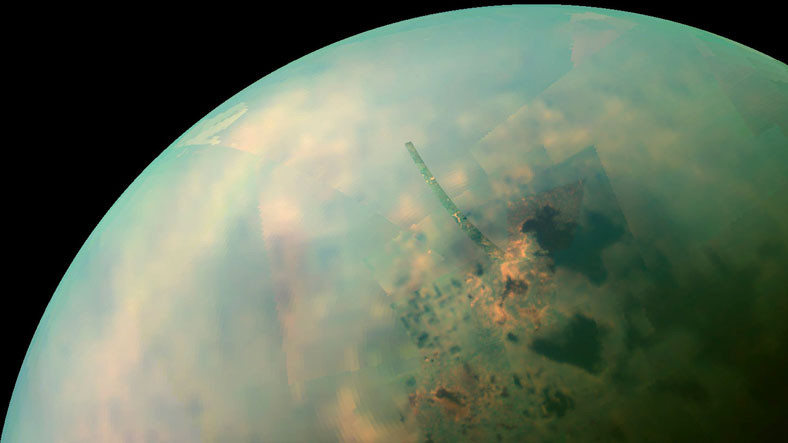Launched into space in December 2021 and launched in the summer James Webb Space Telescopecontinues to send images of our own galaxy along with the depths of space. The telescope recently imaged Titan, Saturn’s largest and most unusually visible moon.
Titan, the most interesting moon in the solar system, drew attention with its unusual colors in James Webb’s image. by many’World in alternate reality This is the new image of Titan, known as:
Titan as seen by James Webb:

- Left: Titan low atmosphere and clouds (NIRCam), Right: Titan atmosphere, surface and clouds (F212N)

- 30 hour cloud change on Titan from November 4 to November 6 (left: NIRCam, right: Keck NIRC-2 equipment)
Titan, as clearly seen in the photos Earthy structure seems to have it. But there’s actually a big difference between the “water” we see on Titan’s surface and the water on Earth: the clouds, seas, lakes, and rivers on Titan aren’t actually water. This is a mixture of liquid methane and ethane.
James Webb will be transmitting data from the Titan satellite in the coming months that we’ve never been able to reach before. This data is obtained with MIRI equipment May-June 2023 is expected during the period. The data will provide important information about the gas in Titan’s atmosphere, as well as provide clues as to why Titan has such a dense atmosphere.
Why couldn’t James Webb, who could observe even the first galaxies of the universe, see Titan clearly on the tip of our noses?
As you can see, the Titan photo isn’t very clear. Okay, so the James Webb Space Telescope, which can observe galaxies billions of light years away, sees Titan or other planets cosmic right at the tip of our noses. why can’t it see the planets clearly? We explained the answer to this question in our content, where we presented the first Mars photo taken by James Webb. You can click the link below to take a look.










:quality(85)//cloudfront-us-east-1.images.arcpublishing.com/infobae/XUTPA2A3TVFNTKHHJH3RVQDWDQ.jpeg)




